I wrote this article in Japanese and translated it into English using ChatGPT. I also used ChatGPT to create the English article title. I did my best to correct any translation mistakes, but please let me know if you find any errors. By the way, I did not use ChatGPT when writing the Japanese article. The entire article was written from scratch by me, Saikawa Goto.
Introduction
Movies and books covered in this article
Three takeaways from this article
- “Defining life as “DNA self-replication” raises questions about the existence of viruses.
- The essence of life lies in “dynamic equilibrium,” where changes occur but balance is maintained.
- The book also covers various familiar topics, such as the uselessness of taking collagen.
Self-introduction article


Published Kindle books(Free on Kindle Unlimited)
“The genius Einstein: An easy-to-understand book about interesting science advances that is not too simple based on his life and discoveries: Theory of Relativity, Cosmology and Quantum Theory”
“Why is “lack of imagination” called “communication skills”?: Japanese-specific”negative” communication”
The quotes in the article were translated using ChatGPT from Japanese books, and are not direct quotes from the foreign language original books, even if they exist.
Learn about the Essence of Life from Fukuoka Shinichi’s “生物と無生物のあいだ(Between Animate and Inanimate)” and “動的平衡(Dynamic Equilibrium)”

This article introduces Fukuoka Shinichi’s two works, “生物と無生物のあいだ(Between Animate and Inanimate)” (Kodansha) and “動的平衡(Dynamic Equilibrium)” (Shogakukan). Both works have the theme of “what is life?” and the most important keyword is “dynamic equilibrium”. Let’s understand the concept of “dynamic equilibrium”, which is not commonly heard in daily life, and understand how the essence of life as a living being is captured.

Why is “Definition of Life” such a Difficult Question?
We are alive. That means we are “life.” But do you know how “life” is defined? You may think of things like having a beating heart, having offspring, and breathing, but unfortunately, none of these really define “life.”
Now, even if you don’t have knowledge of biology, you’ve probably heard of “DNA (deoxyribonucleic acid).” It’s like a container of genetic information, and the discovery of its “double helix structure” by Watson and Crick completely changed the approach of “biology.” Previously, it was only a field of study that chased and investigated the ecology of living animals, but by analyzing and manipulating DNA, it has transformed into a field of understanding the various structures and functions of living organisms.
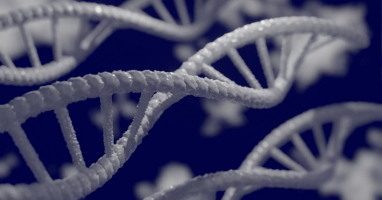
There is an idea to define life using DNA. That is the idea that:
Life is a system that performs self-replication.
This can be easily understood by taking into account the idea of “the Selfish Gene” proposed by Richard Dawkins.

Now, let’s think about “Who benefits the most from life surviving?” You may not understand the meaning of the question, but please keep reading for now. For example, even if we look only at humankind, various choices such as “oneself,” “family and friends,” “all of humanity,” and “all life on Earth” may come to mind. By living in this world, it may be a plus for oneself and give value to family and friends. In a broader sense, one may be contributing to all of humanity, or one may consider that all life on Earth is living by influencing each other.


Now, Dawkins argued that the answer to this question is that “the genes themselves” benefit the most. This is the concept behind “the Selfish Gene.” All life forms, not just humans, are merely “vehicles for genes,” and each individual is not inherently valuable. It means that genes treat each individual as a “vehicle” and continue to exist into the future, which is the raison d’etre of “life. He believes that “genes” are controlled to maintain individual “life” for this only purpose in a “Selfish” manner, that is, with consideration of “only the survival of genes themselves.
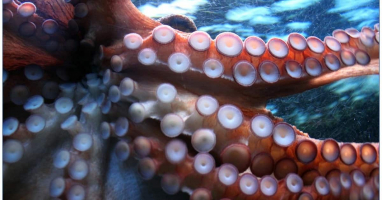
In other words, the idea is that “the most important thing is the ‘survival of genes (DNA)’, and ‘self-replication of DNA’ is a means to achieve that. And this ‘self-replication of DNA’ could be the definition of ‘life’.”
This was one of the achievements of 20th century biology and was accepted as having some credibility. Certainly, the definition of “having DNA and replicating it” seems to apply to all life forms and this way of thinking seems reasonable.
However, since then, an entity that shakes this definition has become known. It is the “virus.” For us, it is understood as something that causes various infectious diseases such as coronavirus and influenza virus. And this “virus” is exactly an entity that exists “between animate and inanimate”.

You may have heard about viruses in news related to the coronavirus. Viruses have the ability to self-replicate. Since viruses do not have their own cells, they cannot replicate on their own, but they can enter a “host” such as the human body and use “other people’s cells” to replicate their own “genetic information.”
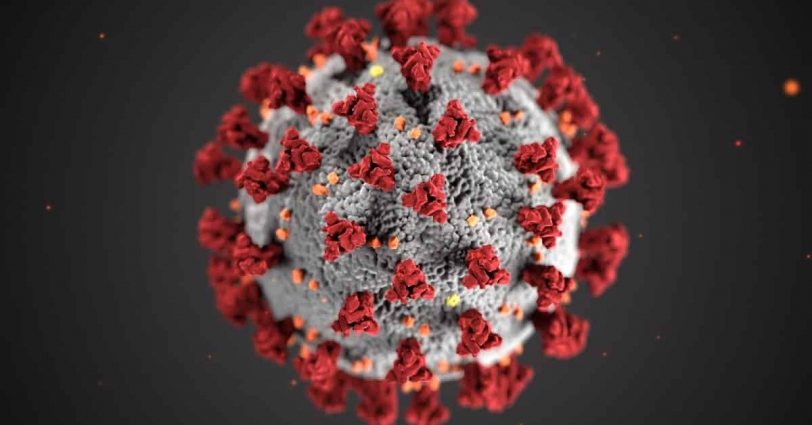
Based on the definition that biology arrived at in the 20th century, viruses can be considered “llife”. However, is this really the correct way to think about them?
If we consider the properties of viruses other than their “self-replication ability”, they don’t seem like “life” at all. Viruses do not consume nutrients, nor do they breathe. They do not take in oxygen or excrete waste, and they do not perform any act called “metabolism”. Also, if a virus is purified in its pure state and concentrated under special conditions, it “crystallizes”. According to existing scientific knowledge, “crystallization” occurs only in “inanimate” substances, which is an unusual phenomenon for normal living things.

If you accept the definition that “life is a system that performs self-replication,” then you have no choice but to consider “viruses” as “life.” However, “viruses” are a far cry from the “life” that we usually imagine. Regardless of what it is, the “definition of words” is for our own sake as humans. There is no value in adopting a definition that does not sit well with us. In other words, we have no choice but to judge that the definition “life is a system that performs self-replication” is not sufficient as a “definition of life.”
In his two works, Fukuoka Shinichi explores how to create a “new ‘definition of life'” based on these questions.
Regarding the “definition of life,” the author focuses on our “consciousness” by giving this example. Imagine walking on a sandy beach. There will be various small stones and shells scattered around. When we see a “small stone,” we can immediately judge that it is “inanimate.” On the other hand, when we see a “shell,” we should be able to judge in an instant that it is “inanimate but used to be animate.”

In other words, we are judging “animate” and “inanimate” based on some criteria. What are we actually conscious of when making that judgment, and how should it be defined in biology?

With this question in mind, Shinichi Fukuoka continues his journey.
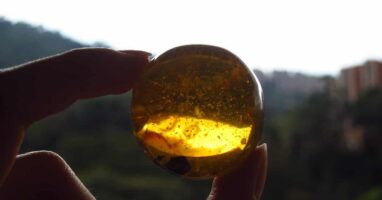
“Dynamic Equilibrium” is a New Concept for Defining “Life”
“Dynamical equilibrium” is a concept proposed by Shinichi Fukuoka. Based on this “dynamical equilibrium,” he defines,
Life as “the flow in a state of dynamical equilibrium.

“Dynamic equilibrium” means that there are changes in each part (dynamic), but overall, a balance is maintained (equilibrium).
For example, let’s imagine a “river”. In a river, water is constantly flowing. The flowing water turns rocks into pebbles, gradually erodes rock walls, and carries various things downstream. This can be called a “state of dynamic change.” However, when we look at the “entire river”, there are no major changes in the location of the river flow, the amount of water flowing, or the force of the water. In other words, it means that “although various changes occur in the details, they maintain a balance, resulting in an overall state of equilibrium.”
This is what “dynamic equilibrium” means.
Fukuoka Shinichi argues that “life” is also in a state of “dynamic equilibrium,” and that this fact is proof of what “life” is.
For example, as we age, we gradually decline, but we usually don’t experience enough change to not recognize an acquaintance we haven’t seen in a year. This can be called a “state of equilibrium.” On the other hand, human cells are constantly being replaced. Depending on the type and nature of the cell, the cycle can vary, but it can be said that “many cells in the body have become different from a year ago” within a year. In other words, there is “dynamic change.”

In this way, the definition of “flow” as “maintaining equilibrium as a whole while having dynamic changes” applies to humans. The author argues that this could be called the “definition of life.”

By adopting this definition, it is possible to exclude viruses from “life.” As mentioned earlier, viruses do not have “metabolism.” That is, there is no “dynamic change” there. Although they have self-replication ability, since there is no “dynamic equilibrium,” it can be determined that “viruses are not ‘life’.”
In this way, the author aims to make readers understand the essential difficulty of the question “what is life?” and then introduce the new concept of “dynamic equilibrium” to take readers to the wonder of “life.” At the same time, in “生物と無生物のあいだ(Between Animate and Inanimate)” and “動的平衡(Dynamic Equilibrium),” these books introduce trivia based on biological knowledge, such as “collagen is meaningless whether eaten or applied to the skin.” Although it is a work dealing with science, it can be said to be a very easy-to-read work.

Next, I would like to introduce an example from various research results introduced in the works that allow you to experience the amazingness of “dynamic equilibrium”.
Understanding the Greatness of “Dynamic Equilibrium” through Experiments on the Liver
In “生物と無生物のあいだ(Between Animate and Inanimate)”, experiments on the liver conducted by the author himself are featured. However, before explaining that, let me explain the magnificent mechanism that the liver has.
The liver is an organ that produces digestive enzymes. And since “digestion” is not performed in the liver, it is natural that “digestive enzymes produced in the liver are released outside the liver and used in places other than the liver.”
Although this situation seems simple when put into words, it is not at all simple biologically. This is not limited to the liver, but in general, “cells” are covered with a very stable substance called the “cell membrane,” and normally, there is no exchange of substances between the inside and outside of the “cell.” If that were to happen, the cell would become unstable. The existence of the “cell membrane” is to avoid this, so in other words, normally, the digestive enzymes produced in the liver cannot leave the liver.

However, as a matter of course, the digestive enzymes produced in our bodies by the liver function correctly. In other words, they are properly released outside the liver. There is a very clever biological mechanism at work here. This article does not go into detail, but a topological solution called “the inside of the inside is the outside” is incorporated.
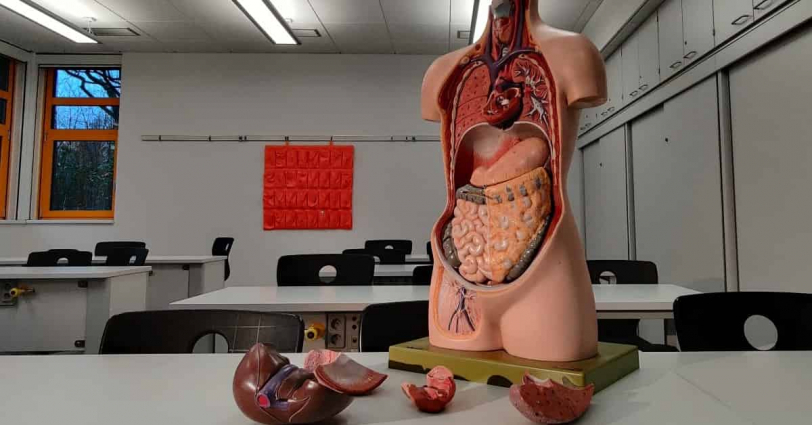
Now, the authors’ group has identified the protein, called “GP2,” which is involved in this series of exchanges taking place in the liver. After years of hard work, they have finally arrived at the conclusion that this “GP2” plays an important role in the “the inside of the inside is the outside” mechanism.
This is where “dynamic equilibrium” comes into play.
The authors want to prove that “GP2” is undoubtedly important in the liver. What kind of experiment should be conducted for this purpose? The most straightforward way would be to observe what happens to “life without GP2.” And scientific progress has made such experiments possible. The authors’ group artificially created mice that do not have “GP2” at all and tried to confirm whether these mice develop significant defects in liver function.

However, this experiment ended in a great failure. Surprisingly, this mouse continued to grow just like a regular mouse with “GP2”.
However, this research does not mean that “GP2” is not an important protein in the liver. In fact, “GP2” definitely plays an important role in the liver. However, even without “GP2”, life can still be sustained.
This is the power of “dynamic equilibrium”, and the author explains it using the example of making a paper crane.
Life is born when a fertilized egg divides into cells that have various functions, and this process can be compared to making a paper crane by folding a piece of paper. By continually dividing cells, the fertilized egg creates “life”.

However, “paper crane” and “life” are completely different.

In the case of “paper crane”, it should not be completed unless it is folded correctly. If you make a mistake in the first step, it will not go well thereafter, and you must not skip any steps. You cannot reach the “correct paper crane” unless you fold it correctly from the start.
However, in the case of “life”, to reach “baby” from a fertilized egg, an enormous number of steps (cell divisions) must be repeated compared to “paper crane”. If all of these processes had to take place without any mistakes in order to reach the “baby,” the probability of life would be greatly reduced, and that would be a big problem for the “genes.”

Therefore, “life” has a mechanism that allows it to reach “baby” even if the “steps of cell division are wrong or some steps are skipped.” This is exactly why “mice without GP2 still have no problem with liver function.” Even if the important element called “GP2” is missing, another route to establish “life” without it will be found. And the author argues that this dynamism that life possesses is the power of “dynamic equilibrium.”
In this way, this work develops the claim that “the dynamic equilibrium state of life is the essence of life” while giving various examples.
While it may seem difficult, Fukuoka Shinichi’s writing is easy to read and covers both hard and soft topics, making it an excellent introductory book for those who want to read about science. In order to convey this nuance, I would like to briefly touch on the “easy topics” introduced in “生物と無生物のあいだ(Between Animate and Inanimate)” and “動的平衡(Dynamic Equilibrium)” that are not directly related to “What is life?” and “Dynamic Equilibrium.”

“Familiar Topics” Introduced in “生物と無生物のあいだ(Between Animate and Inanimate)” and “動的平衡(Dynamic Equilibrium)”
While Fukuoka Shinichi’s two works certainly contain many scientific descriptions, it can be said that they are works of the type that can also be called “essays” as a whole. This is because he touches on matters related to his own life, such as stories from his time in New York for research and episodes from his alma mater.

In addition, he also takes up topics that can be enjoyed even by people who are not very familiar with science, from the perspective of a scientist, such as “Noguchi Hideyo is not highly regarded as a researcher worldwide”, “An unfair story about the discovery of DNA”, “Interactions with a surfer biologist and a pianist experimentalist”, and “Reasons why time seems to pass more quickly as you get older.” I hope you will not hesitate to pick up his books.
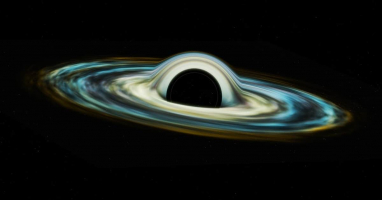
Now, let me introduce a few interesting episodes that I found fascinating.
One thing that surprised me when reading the book was the fact that “collagen, whether ingested or applied to the skin, is not absorbed as collagen.” It may be now a well-known fact, but I think back in 2009 when “動的平衡(Dynamic Equilibrium)” was first published, it wasn’t widely known yet, so I was quite surprised. And even now, there are still many people who don’t know this fact, as products such as “collagen-enhanced” still exist.
Proteins such as collagen are broken down into even smaller molecules called amino acids during the process of being absorbed into the body from the mouth or skin. In other words, even if you ingest collagen, it is not taken into the body as collagen. Actually, the act of “supplementing the protein that is deficient in the body by taking it in from the outside” is meaningless in the first place.
Therefore, one must aim for the production of that protein inside the body. Since proteins are made from amino acids, it is not completely meaningless to think of it as “taking in the amino acids needed as materials into the body,” but it is important to understand that “ingested proteins are not absorbed as they are.”

Furthermore, it seems that “it’s not necessarily good to consume as many nutrients as possible.” While some people may take supplements because they are widely available, there is a possibility that it may have adverse effects. The author writes that if you have a typical Japanese diet, you won’t lack any essential nutrients. Additionally, the research group that determines the nutritional requirements of Japanese people is working on setting the “upper limit” of vitamins and minerals intake every few years.
As an example, Tryptophan is mentioned. Tryptophan is an ingredient that helps with sleep disorders, and supplements are also available. However, there is a risk of danger if you take too much of it. This is because Tryptophan changes into a useful substance called NAD through Quinolinic acid. But, Quinolinic acid is a potent poison, and excessive Tryptophan intake can cause its toxicity to become a problem. Normally, Quinolinic acid immediately transforms into NAD, and it does not have any adverse effects. However, the author notes that since there is no shortage of Tryptophan in normal life, excessive intake may lead to negative effects on the human body.

This work can be picked up from various interests because it covers familiar topics like this. The publication itself may be a bit old, and some of the information may be outdated from the latest knowledge. However, it plays a role in “arousing interest in science” that never fades, and it is a book that I definitely recommend you to read as an introductory book.
Conclusion
Through reading this book, I learned that the question “What is life?” which seems too basic is actually a very difficult one, and I found Fukuoka Shinichi’s concept of “dynamic equilibrium” as an answer to that question very interesting. While many books on science may feel difficult and hard to reach, these two works are excellent introductory books that can be recommended even to those who study humanities.
If you have the opportunity, please pick them up and give them a try.

Published Kindle books(Free on Kindle Unlimited)
“The genius Einstein: An easy-to-understand book about interesting science advances that is not too simple based on his life and discoveries: Theory of Relativity, Cosmology and Quantum Theory”
“Why is “lack of imagination” called “communication skills”?: Japanese-specific”negative” communication”
I wrote this article in Japanese and translated it into English using ChatGPT. I also used ChatGPT to create the English article title. I did my best to correct any translation mistakes, but please let me know if you find any errors. By the way, I did not use ChatGPT when writing the Japanese article. The entire article was written from scratch by me, Saikawa Goto.
Introduction
Movies and books covered in this article
Three takeaways from this article
Self-introduction article


Published Kindle books(Free on Kindle Unlimited)
“The genius Einstein: An easy-to-understand book about interesting science advances that is not too simple based on his life and discoveries: Theory of Relativity, Cosmology and Quantum Theory”
“Why is “lack of imagination” called “communication skills”?: Japanese-specific”negative” communication”
The quotes used in this article are based on notes taken at the movie theater and may not be entirely accurate.
OR
The quotes in the article were translated using ChatGPT from Japanese books, and are not direct quotes from the foreign language original books, even if they exist.
Content Introduction
Impression
Conclusion

Published Kindle books(Free on Kindle Unlimited)
“The genius Einstein: An easy-to-understand book about interesting science advances that is not too simple based on his life and discoveries: Theory of Relativity, Cosmology and Quantum Theory”
“Why is “lack of imagination” called “communication skills”?: Japanese-specific”negative” communication”








コメント